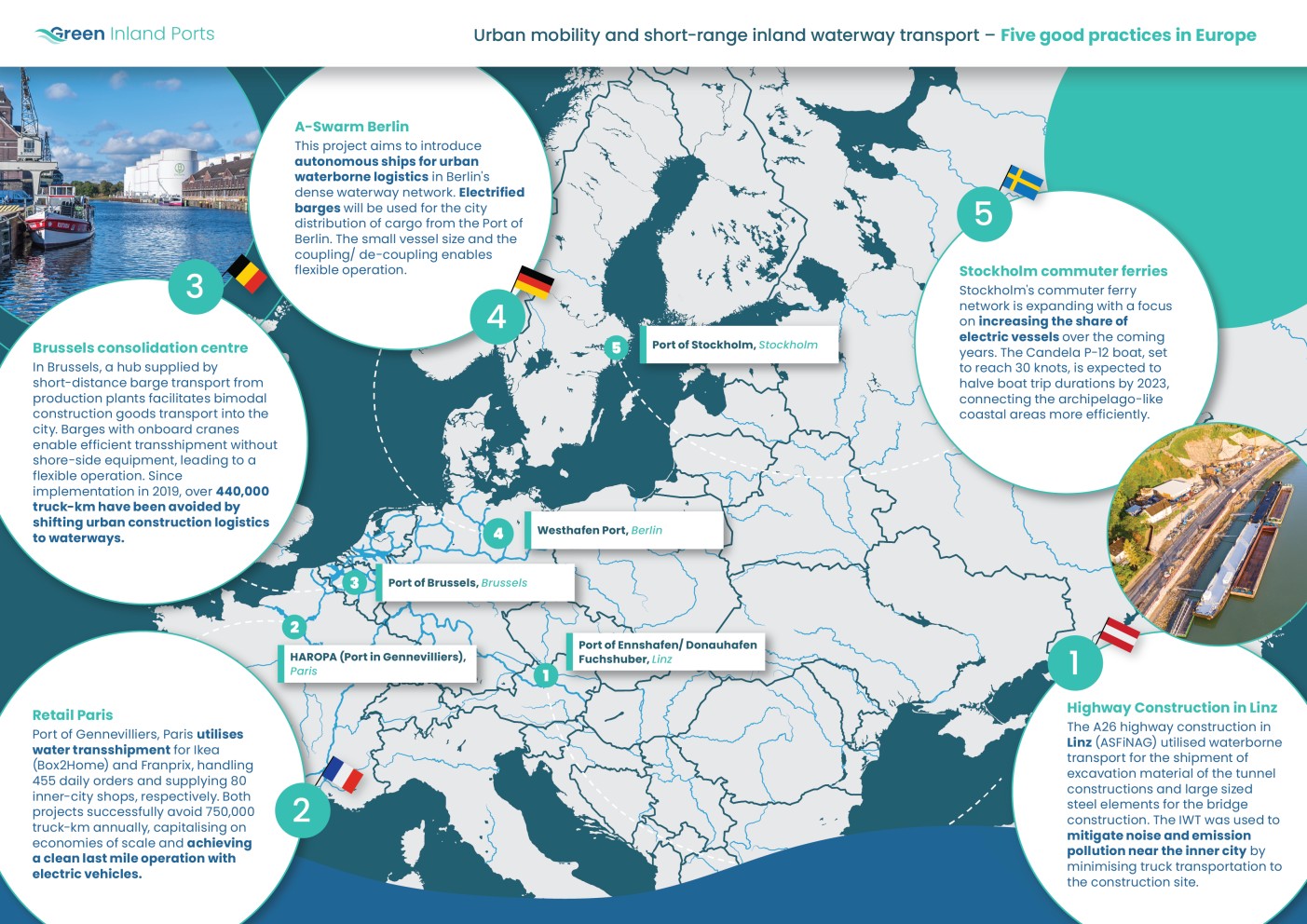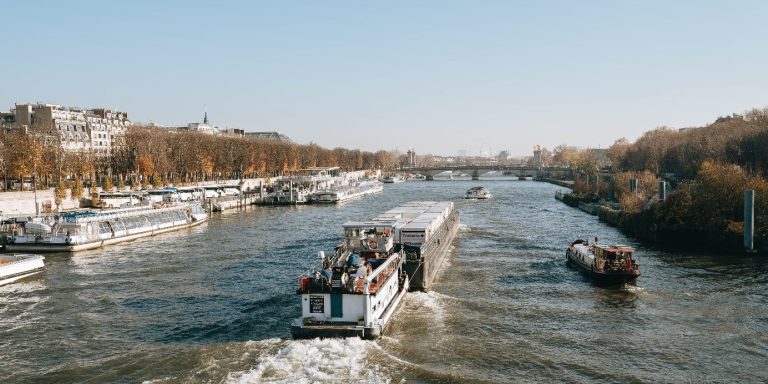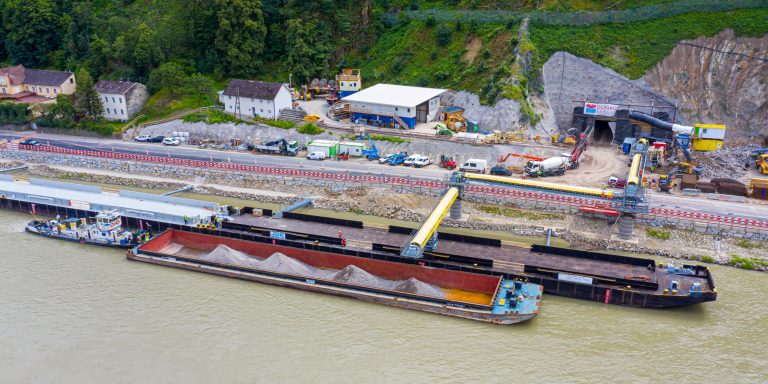Task 2
Urban mobility and short-range inland waterway transport
Inland Waterway Transport (IWT) holds untapped potential for the future of sustainable urban transport. Through our research, we will look at how Inland Waterway Transport (IWT) can contribute to the success of the EU Green Deal and create cleaner urban environments.

By tackling the challenges and barriers for IWT in urban and short-range operations, both for freight and passenger transport, we aim to exploit the untapped potential of the sector beyond its traditional markets.
To this end, we analyse 20 examples of good practices covering a range of market segments, geographic locations and river basins to identify success factors, challenges, barriers and opportunities. The selection of 20 good practice examples is spread across market segments of retail delivery, parcel delivery, waste transport, construction materials transport and urban passenger transport. Various examples come from France, the Netherlands, Germany and Hungary. There are also examples in Sweden and Austria. The idea is to learn from these examples and identify success factors in urban mobility and short-range logistics to strengthen IWT in these markets.
Furthermore, our good practices will show how to support the set-up of new services. In an in-depth analysis, interviews will be conducted with case operators and other stakeholders, to gather relevant information and insights valuable for our evaluation. The roll-out potential of the good practices will be analysed based on an evaluation.
A small selection of cases will be presented on LinkedIn and our website in the coming months, where they will be analysed in more detail. A map below gives a snapshot overview of a selection for some good practice cases.
We are pleased to present case studies on short-range waterway transport below.
Take a look at the map below to learn more about the five good practices identified under Task 2:




